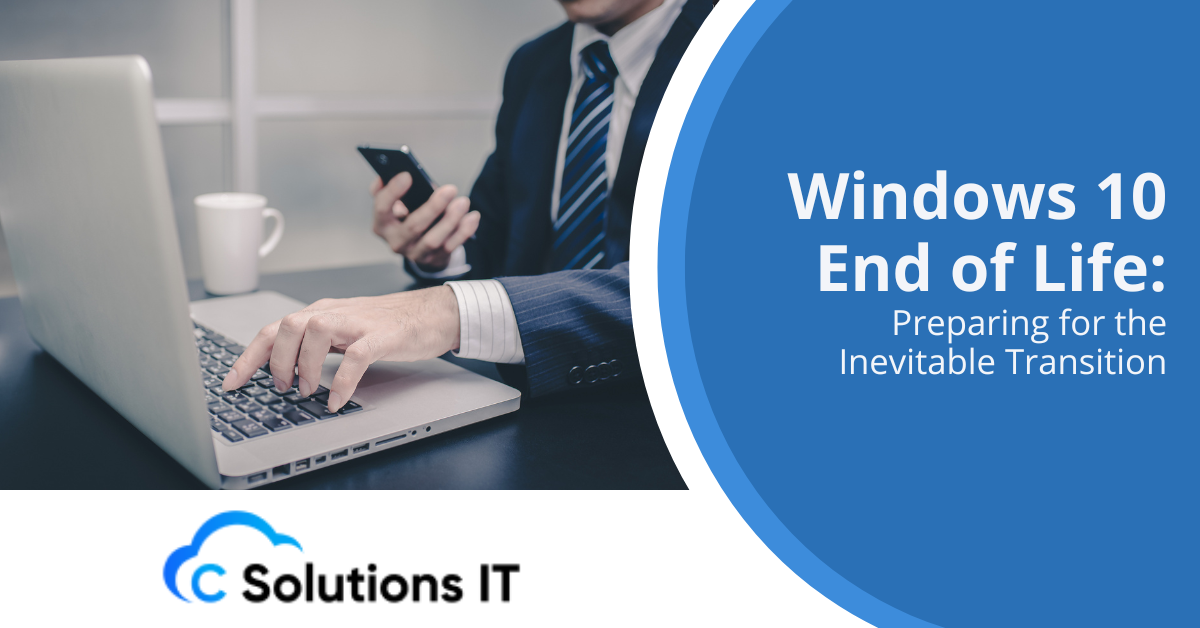Windows 10 End of Life: Preparing for the Inevitable Transition

As technology continues to evolve at a rapid pace, it’s essential for businesses and individuals to stay ahead of the curve and plan for upcoming changes. One such change that is looming on the horizon is the end of life (EOL) for Windows 10, Microsoft’s widely-used operating system. With the EOL date approaching, it’s crucial to understand what this means and how to prepare for a smooth transition.
Introduction to Windows 10
Windows 10 was released in July 2015 and quickly became one of the most popular operating systems for personal computers and business environments. However, like all software, it has a finite lifespan, and Microsoft has announced that Windows 10 will reach its end of life on October 14, 2025. This means that after this date, Microsoft will no longer provide security updates, bug fixes, or technical support for the operating system.
Failing to upgrade from an unsupported operating system can leave your systems vulnerable to security threats, compatibility issues, and potential data breaches. Therefore, it’s essential to start planning for the transition to a newer operating system well in advance.
Hardware Refreshment: A Necessary Step
One of the most critical aspects of preparing for the Windows 10 EOL is assessing your current hardware infrastructure. Many older devices may not meet the minimum system requirements for upgrading to the latest version of Windows, such as Windows 11. In such cases, a hardware refreshment may be necessary.
A hardware refreshment involves replacing outdated or aging hardware components with newer, more powerful ones. This can include upgrading to newer processors, increasing RAM, and replacing older storage drives with faster solid-state drives (SSDs). By refreshing your hardware, you can ensure that your systems are capable of running the latest operating systems and applications efficiently.
Timeline for Upgrading
When it comes to upgrading to a newer operating system, timing is everything. It’s essential to plan and execute the upgrade process well in advance to minimize disruptions and ensure a smooth transition. Here’s a suggested timeline for upgrading from Windows 10:
- Now – December 2024: Assess your current hardware infrastructure and identify any devices that may need to be replaced or upgraded. Begin budgeting for hardware refreshment and software licensing costs.
- January 2025 – June 2025: Start testing and piloting the new operating system (e.g., Windows 11) on a small subset of devices to identify and resolve any compatibility issues or challenges.
- July 2025 – September 2025: Roll out the new operating system to the rest of your organization in phases, ensuring that all systems are upgraded before the Windows 10 EOL date of October 14, 2025.
- October 14, 2025, and beyond: Ensure that all systems have been successfully upgraded, and continue to monitor and maintain the new operating system environment.
Windows 11 Eligibility and Free Upgrade
For those with compatible hardware, Microsoft has announced that Windows 10 users will be eligible for a free upgrade to Windows 11. However, it’s important to note that not all devices will meet the minimum system requirements for Windows 11.
To be eligible for the free upgrade, your device must meet the following minimum requirements:
- 1 GHz or faster processor with two or more cores on a compatible 64-bit processor or System on a Chip (SoC)
- 4 GB of RAM
- 64 GB of available storage space
- UEFI secure boot capable
- Trusted Platform Module (TPM) 2.0
- Graphics card compatible with DirectX 12 or later with WDDM 2.0 driver
- High definition (720p) display, 9″ or greater monitor
- Internet connection and Microsoft account
If your current devices do not meet these requirements, you may need to consider a hardware refreshment to take advantage of the free upgrade offer.
Get Ready For an Upgrade
The end of life for Windows 10 is an inevitable reality that businesses and individuals must prepare for. By following a well-planned timeline, assessing your hardware infrastructure, and taking advantage of the free upgrade offer for eligible devices, you can ensure a smooth transition to the latest operating system.
At C Solutions IT, we understand the challenges that come with major software and hardware upgrades. Our team of experts is dedicated to providing comprehensive IT solutions tailored to your specific needs. Whether you require assistance with hardware refreshment, software deployment, or ongoing support and maintenance, we are here to guide you through every step of the process.
Don’t wait until the last minute to prepare for the Windows 10 EOL. Contact C Solutions IT today, and let us help you navigate this transition seamlessly, ensuring that your systems remain secure, efficient, and up-to-date.
